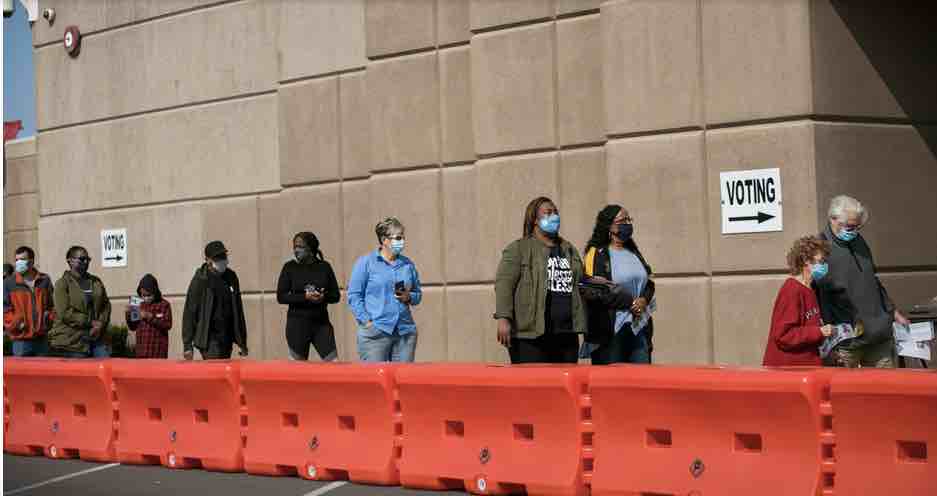Nearly 160 million Americans voted in the 2020 elections, by far the most in history and a level of turnout not seen in over a century, representing an extraordinary milestone of civic engagement in a year marked by a devastating pandemic, record unemployment and political unrest.
With all but three states having completed their final count, and next week’s deadline for final certification of the results approaching, the sheer volume of Americans who actually voted in November was eye-opening: 66.7 percent of the voting-eligible population, according to the U.S. Election Project, a nonpartisan website run by Michael McDonald, a University of Florida professor who tracks county-level data.
It is the highest percentage since 1900, when the voting pool was much smaller, and easily surpasses two high-water marks of the modern era: the 1960 election of John F. Kennedy and the 2008 election of Barack Obama. Since the passage of the 19th Amendment in 1920, which gave women the right to vote and roughly doubled the voting eligible population, turnout had never surpassed 64 percent.
The shifts that led to this year’s surge in voting, in particular the broad expansion of voting options and the prolonged period for casting ballots, could forever alter elections and political campaigns in America, providing a glimpse into the electoral future.
A backlash from the right could prevent that, however. In many ways, the increase in voting is what Mr. Trump and the Republican Party are now openly campaigning against in their floundering bid to overturn his clear loss to President-elect Joseph R. Biden Jr. — whose popular vote lead grew to seven million on Friday. Republicans have portrayed the burgeoning voting ranks as nefarious and the expanded access to voting options as ripe for fraud — despite the fact that the record turnout provided them numerous victories down ballot.




